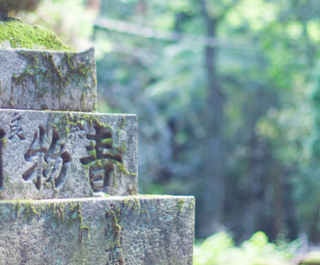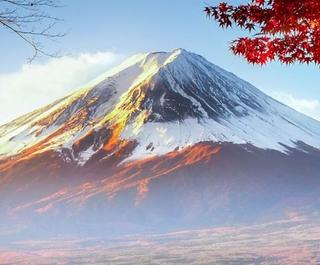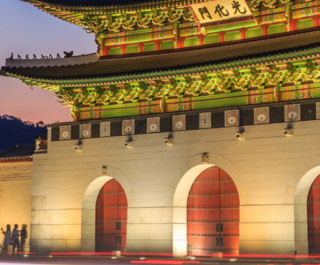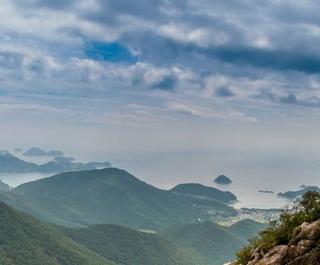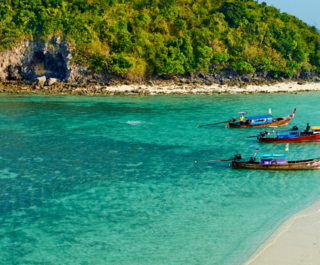
Kyoto on a crisp autumn afternoon, is just about perfect. The air is cool, the trees are tinged with fiery red and orange, and dappled sunlight trickles through the leaves from a cloudless sky. Little wonder so many visitors flock to Kyoto between September and November.
Japan’s former imperial capital looks positively radiant in the warm autumn light, with the golden panels of Kinkaku-ji – the Temple of the Golden Pavilion – particularly resplendent.
You can walk from Ginkaku-ji – the Temple of the Silver Pavilion – to the Buddhist temple Nanzen-ji along the picturesque Philosopher’s Walk.
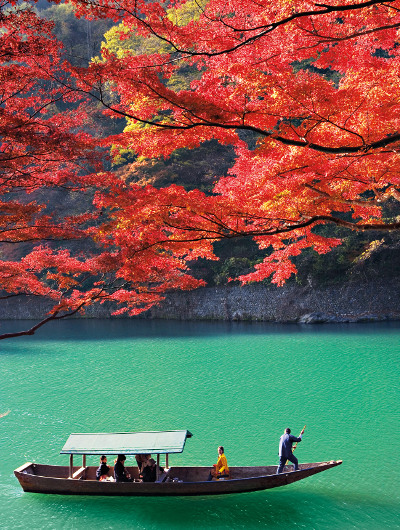 A serene boat ride at Arashiyama, Kyoto Prefecture
A serene boat ride at Arashiyama, Kyoto Prefecture
When the colourful leaves drift lazily into the meandering canal that lines the route, the scene is quintessentially Japanese. It’s in stark contrast to the whitewashed landscapes of Hokkaido. Japan’s northernmost island is a winter wonderland, with the apres-ski scene of Niseko proving a hit with Australians.
Nagano, on the main island of Honshu, is another popular ski region. The host of the 1998 Winter Olympic Games not only has some of Japan’s best ski runs, it’s also a great place to take a dip in a traditional onsen – hot thermal springs pumped straight into indoor and outdoor pools.
You might even share your hot spring with some cute critters if you head for Japan’s largest ski resort, Shiga Kogen. Nearby Jigokudani Monkey Park is home to a colony of Japanese macaques and the resident primates delight in warding off the cold with a warm bath.
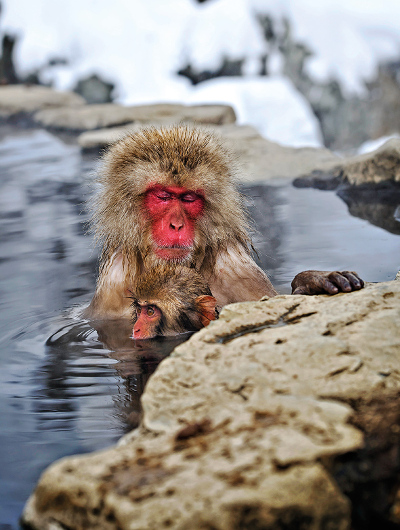 Snow monkeys warm up in a hot-spring bath
Snow monkeys warm up in a hot-spring bath
Thinking of visiting the spas? How To Onsen With Confidence
Love medieval history? Exploring Japan's Original Castle Towns
While winter brings plenty of snow, the warmer climes of spring make it a popular time to visit. That’s largely because the cherry blossoms are in season, with hanami (cherry blossom viewing) parties taking place around the country.
Grab some picnic staples and head for the nearest park if you’d like to join in; cherry blossom season is one of Japan’s most festive times of the year.
There are few better places to view the cherry blossoms than Osaka Castle, with the historic attraction bathed in shades of pink and white, making Osaka and the surrounding Kansai region an ideal spring destination.
Nearby Koshien is Japan’s most famous sporting venue and every summer the ivy-covered stadium plays host to the National High School Baseball Championship, one of Japan’s most venerated sporting institutions.
Baseball is a beloved summer pastime in a nation that has played the sport for more than a century, but the hottest part of the year is perhaps best known for the Obon festivals that are celebrated far and wide.
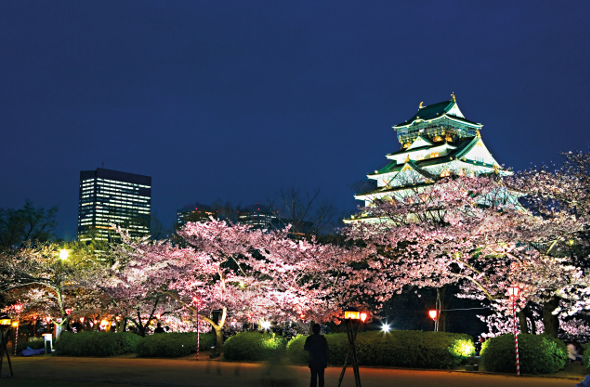 Osaka Castle during cherry blossom season
Osaka Castle during cherry blossom season
Fireworks displays are a common sight during Obon, while the numerous neighbourhood celebrations traditionally finish with revellers floating illuminated paper lanterns down the nearest river.
Plenty of festival food is enjoyed during Obon and even if you don’t speak fluent Japanese, there are still opportunities to try some traditional cuisine. Street food vendors are a common sight, with the likes of takoyaki – savoury snacks typically filled with diced octopus – and grilled chicken skewers of yakitori among the street-food favourites.
Sushi is perhaps Japan’s best-known dining export and you’ll find none fresher than in Tokyo’s famous Tsukiji Fish Market. Take an early-morning tour of this fascinating attraction and finish up with some sashimi from one of the countless eateries dotted around the perimeter of the market.
Tokyo offers an endless array of delights. From the high-tech heights of Tokyo Skytree to the old-world temples of Asakusa, the theme park thrills of Tokyo Disney Resort and all the glitz and glamour of Shibuya and Shinjuku, Japan’s national capital is a city that never sleeps.
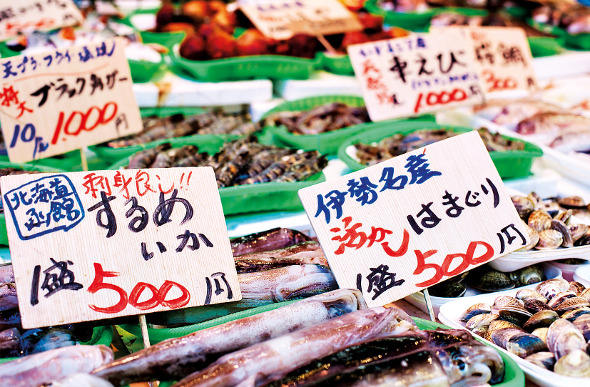 Tokyo's famous Tsukiji Fish Market
Tokyo's famous Tsukiji Fish Market
Like the yin to Tokyo’s yang, the city’s western counterpart Osaka is a more laidback affair. Perched on the edge of Osaka Bay, this bustling city is home to the world-famous Osaka Aquarium Kaiyukan, the Tempozan Ferris Wheel and Universal Studios Japan, as well as being located close to the cities of Kobe, Kyoto and Nara.
Like its near-neighbour Kyoto, the historic city of Nara is a former imperial capital. It’s also a great place to enjoy some traditional Japanese accommodation in the form of a ryokan. Featuring tatami-matted rooms and often communal baths, ryokan are popular with guests eager to enjoy a slice of old-world Japan.
For a complete change of scenery, capsule hotels are popular throughout the country, from cosmopolitan Fukuoka in Kyushu all the way up to Hokkaido’s snowy Sapporo, making them a fun way to experience a different side of Japan.
That’s the beauty of this country. Just when you think you’ve seen it all, along comes something new to shatter your preconceptions of this multi-faceted destination.
So what are you waiting for? Grab yourself a Japan Rail Pass and start exploring. A land of new ideas and enthralling experiences awaits.



